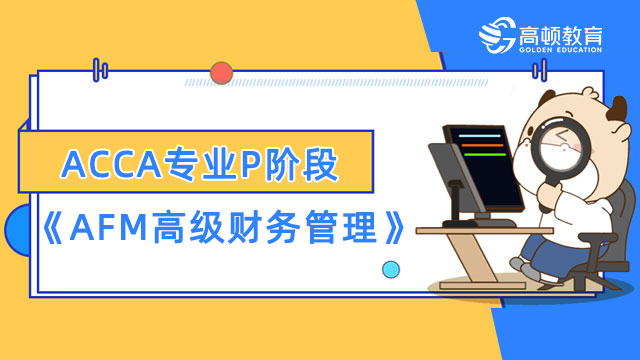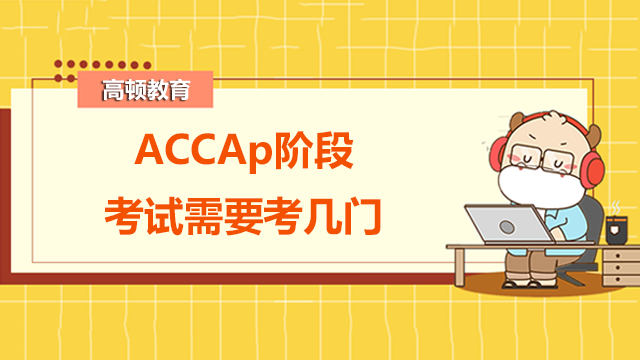2012年12月ACCA考试P3考试考官报告
来源:
高顿网校
2013-06-27
每次考试结束ACCA考官都会根据本次考试考生的总体表现情况写报告,具体分析学生在答题过程中出现的问题,总结学生在备考该科目时应该注意的事项,以下是2012年12月P3考官报告:
General Comments
The Business Analysis examination is in two sections. The first section contains one mandatory question, worth 50 marks, based around an extended case study. The second section contains three questions, each worth 25 marks. The candidate is required to answer two questions from this section. Performance in this examination was disappointing. This was despite good answers to the mandatory question one, where many candidates achieved high marks. However, there was even evidence in this question of candidates not being familiar with certain parts of the syllabus. A significant number of candidates did not answer the part of this question concerned with benchmarking. In the optional questions, there was considerable evidence of candidates being unfamiliar with parts of the syllabus. Question four, on decision trees, risk and software package evaluation was not answered by many candidates. However, even within their selected questions (questions two and three) it was clear that many candidates were unfamiliar with the principles of strategic alliances and (in particular) the sources of internal finance. This lack of knowledge meant that many candidates scored poorly in their selected optional questions. Many candidates also spent too much time on question one part a, producing an answer that was far too long for the marks on offer. This meant that these candidates had less time to answer the optional questions. Time management is a common problem on this paper, and, judging by comments on various forums, is one that most candidates are aware of. The need for appropriate planning and time management in this examination can only be re-iterated.
Overall, candidates are encouraged to write answers that are precise and focussed. Obviously, the size of handwriting does vary, but in general most successful scripts were 12 – 15 sides long. They were easily contained in one examination booklet. Too many long scripts appear to be streams of consciousness with too much repetition, verbatim copying of facts and figures given in the scenario and text about models and frameworks that needed to be applied and not described.
Specific Comments
Question One
The scenario for this question described four companies in the EA Group. The first part of the question asked candidates to analyse the performance of each of the four companies described in the scenario and to assess each company’s potential contribution to the EA Group portfolio of businesses. The key word here was portfolio. Most candidates recognised that this question was concerned with portfolio analysis and so used appropriate analysis models. The provision of market share and market growth data made the use of the BCG matrix (Boston Box) particularly appropriate. Some candidates did use alternative models (SWOT in particular) and still scored relatively well. However, there was insufficient data to undertake a SWOT analysis for each of the four firms in the scenario. Many candidates scored very well in this part question. Indeed, in some respects, some answers were too comprehensive, with candidates making more points than the marks on offer. Sometimes this led to time problems later on in the paper. A few candidates scored very heavily on this part question (over 20 marks) and yet still failed the examination overall, probably due to poor time management caused by spending too much time on this part question. In contrast, the second part of question one was poorly answered. This asked candidates to evaluate the potential influence of time, scope, capability and readiness for change at Steeltown Information Technology on any strategic change proposed by the EA Group. Too many answers did not concern themselves with strategic change but instead focused on changes in the type of systems developed at Steeltown and the fact that there was a backlog of applications and that user departments found it difficult to specify system requirements in advance. Furthermore, too few candidates commented on the competencies that the EA Group would bring to the problem, concluding that Steeltown would not have the ability to implement strategic change itself. This is probably true, but the scenario makes it clear that responsibility for strategic change lies with the EA Group. ‘They (the EA Group) want to explore these (contextual) factors before they firm up their proposed strategy for the newly acquired company’ (my italics). The final part of the first question concerned benchmarking. It was clear that many candidates had read the relatively recent Student Accountant article on this and so scored relatively well. It also appeared that some candidates were not prepared for this subject at all and omitted it completely.Overall, this part question was fairly well answered (5 or 6 marks out of ten was typical) by those who answered it.
Question Two
The scenario for question two concerned a large estate that was facing internal and external problems. A large part of the scenario consisted of quotes from a recent stakeholder survey. The first part of this question (worth 15 marks) asked candidates to evaluate the strategic position of the estate with specific reference to The expectations of stakeholders (both internal and external) The external environment of the estate Strategic capabilities of the estate itself (internal strengths) Candidates tended to produce unstructured answers to this part question, due to one, or more, of the following reasons. Too much use of the Mendelow power/interest grid; leading to a consideration of stakeholder management, rather than the conflict caused by the different stakeholder perspectives and expectations.Overusing PESTLE, in a case study scenario where there was very little on, for example; technology, economy and environment. Technology was usually considered in the perspective of the website, which of course is an internal resource. Indeed it is an internal weakness. Attempting a SWOT analysis for which there was just insufficient information. This led to the consideration of weaknesses, which again resulted in an inappropriate in-depth analysis of the defects of the web site.
Overall, this part question was not well answered, and despite some very lengthy answers, relatively few candidates gained a pass mark on this part question. The second part of the question asked candidates to discuss how the estate’s website could be further developed to address some of the issues highlighted in the stakeholder survey. This should have been relatively straightforward, and indeed many candidates did score well in this part question, cross-referencing their points to the comments made in the stakeholder survey. However, other candidates focused too much on the 6is (interactivity etc…), introducing general points that they could not back up with a relevant example, because they were not appropriate in the context of the scenario.Overall, although question two was popular, it was not answered as well as it should have been.
Question Three
This question concerned an industrial chemist who was looking for ways to take his company and ideas forward and exploit them before his patent expired. The first part of the question asked the candidate to evaluate the appropriateness of franchising, highlighting the advantages and disadvantages of this approach from the perspective of the chemist (the owner of Graffoff). This part question was relatively well answered, using a structure suggested by the question; description, advantages, disadvantages, evaluation. Some candidates did try to use the Johnson, Scholes, Whittington framework of suitability, acceptability and feasibility but this framework did not really suit the information given in the scenario. Some candidates were confused about franchising, restricting their discussion to a franchise just offered to one company; the Equipment Emporium. The second part of the question asked the candidate to evaluate how other forms of strategic alliance might be appropriate to strategic development at Graffoff. Many candidates were aware of joint ventures and licensing but really failed to suggest why these might be more appropriate or different to franchising. Candidates could have also made more of the potential link up with the Equipment Emporium. Some candidates suggested mergers, acquisitions and even selling the company. However, these are not strategic alliances.
Finally, candidates were asked to evaluate a claim that Graffoff could completely fund its organic expansion at a cost of $500,000, through internally generated sources of finance. This part question was poorly answered on three counts: Many answers were too general (reduce creditor days) and included no calculation at all, so the consultant’s claim could not be properly evaluated. Too many candidates turned the question into a general question on the advantages and disadvantages of organic growth. There were some good answers to a totally different question. In the context of this examination, most of these answers scored zero; Finally, too many answers focused on external finance (share issues, more loans) and this was specifically excluded from the question. Although question three was a popular question, many candidates scored poorly on parts b and c.
Question Four
This question concerned a producer of aircraft and ship engines and the conduct and aftermath of a search for engine testing technology. The first part of the question asked candidates to conduct a decision tree from information given in the question scenario. It also required candidates to discuss the implications and shortcomings of decision trees. Although this was an unpopular question (see below), many candidates showed
that they were very familiar with constructing and interpreting decision trees and so scored reasonably well on this part question. The most common error was to forget to subtract the cost of the investment. However, it also has to be said, that some answers were very poor and it was unclear why the candidate chose to answer this optional question.
The second part of this question asked the candidate to discuss what other factors, not reflected in the decision tree analysis, should be also taken into consideration when choosing which option to select. Again, candidates who knew this topic well, produced good answers, centred on risk, supplier viability and software functionality. In contrast, some answers were very poor and rambling; not answering the specific question at all.
Finally, candidates were asked to consider how two risks; supplier business failure and employee travel, might be avoided or mitigated. Again there were some very good answers. However, there were also some very poor answers, lacking in content or generally describing risk management without any context at all.
Overall, this question was unpopular. Candidate performance tended to be good, with candidates confident in the application and limitations of decision tree analysis and able to properly discuss risk in context, or poor, with candidates unable to properly undertake decision tree analysis or discuss the concept of risk in the context of the scenario.
高顿网校特别提醒:已经报名2013年ACCA考试的考生可按照复习计划有效进行!另外,高顿网校2013年ACCA考试辅导高清课程已经开通,通过针对性地讲解、训练、答疑、模考,对学习过程进行全程跟踪、分析、指导,可以帮助考生全面提升备考效果。
报考指南: 2013年ACCA考试报考指南
考前冲刺:ACCA考试试题 考试辅导
高清网课:ACCA考试网络课程
版权声明:本条内容自发布之日起,有效期为一个月。凡本网站注明“来源高顿教育”或“来源高顿网校”或“来源高顿”的所有作品,均为本网站合法拥有版权的作品,未经本网站授权,任何媒体、网站、个人不得转载、链接、转帖或以其他方式使用。
经本网站合法授权的,应在授权范围内使用,且使用时必须注明“来源高顿教育”或“来源高顿网校”或“来源高顿”,并不得对作品中出现的“高顿”字样进行删减、替换等。违反上述声明者,本网站将依法追究其法律责任。
本网站的部分资料转载自互联网,均尽力标明作者和出处。本网站转载的目的在于传递更多信息,并不意味着赞同其观点或证实其描述,本网站不对其真实性负责。
如您认为本网站刊载作品涉及版权等问题,请与本网站联系(邮箱fawu@gaodun.com,电话:021-31587497),本网站核实确认后会尽快予以处理。
点一下领资料
【整理版】ACCA各科目历年真题
真题高频考点,刷题全靠这份资料
下载合集
acca全科学习思维导图
梳理核心考点,一图看懂全部章节
下载合集
2023年acca考纲解析
覆盖科目重难点,备考按照计划走
下载合集
acca备考 热门问题解答
- acca考试怎么搭配科目?
-
建议优先选择相关联的科目进行搭配报考,这样可以提高备考效率,减轻备考压力,1、F1-F4:为随时机考科目,难度较低,这里可以自行随意选择考试顺序。2、F5-F9:如果你的工作的和财务会计或者审计有关、或者你比较擅长财务和审计的话,推荐先考F7和F8。你可以选择一起考ACCA考试科目F7和F8或者先考F7(8)再考F8(7),这就要取决你一次想考几门。3、P阶段:选修科目中,建议企业首选AFM!第二部分科目进行选择,如果AA和SBR掌握学生更好,可以通过选择AAA,如果SBL掌握的好,可以自己选择APM。
- acca一共几门几年考完?
-
acca一共有15门考试科目,其中有必修科目和选修科目,考生需要考完13门科目才能拿下证书。
- acca一年考几次?
-
acca一年有4次考试,分别是3月、6月、9月和12月,分季机考科目是采取的这类四个考季的模式,而随时机考则是没有这方面的时间规定限制,可以随报随考。
- acca的含金量如何?
-
ACCA证书的含金量是比较高的,从就业、能力提升、全球认可等角度来说,都是比较有优势的证书,其含金量主要表现在以下几个方面:1、国际化,认可度高;2、岗位多,就业前景好;3、缺口大,人才激励。
严选名师 全流程服务
其他人还搜了
热门推荐
-
acca专业阶段考试科目有哪些?究竟都考些什么? 2023-04-23
-
accaP阶段科目考完需要多久?速戳了解! 2023-03-28
-
ACCA高级课程是哪几门?和基础课程比难度怎么样? 2023-03-17
-
sbr和sbl哪个难?accaP阶段先考哪个? 2023-03-16
-
accaP阶段报名费是多少?一文介绍全了! 2023-03-14
-
accaP阶段有哪些科目?各科目详细介绍! 2023-03-14
-
accap阶段考试顺序是怎样的?选修科目怎么选? 2023-03-10
-
acca考试科目:《ATX高级税务》重点详解! 2023-03-06
-
acca考试科目:《APM高级业绩管理》重点详解! 2023-03-06
-
acca考试科目:《AFM高级财务管理》重点详解! 2023-03-06
-
accap阶段有效期是多久?需要几年内考完? 2023-03-01
-
accaP阶段选修选哪两门?各科难度对比来了! 2023-02-28
-
2023年acca的sbl怎么学?点击查收备考攻略! 2023-02-24
-
acca考试p阶段科目题型,附各科分值参考! 2023-02-23
-
accap阶段要考几门?重难点是什么? 2023-02-10
-
accap阶段要考几门?重难点是什么? 2023-02-10
-
accaP阶段科目怎么搭配?先考哪门? 2023-02-09
-
ACCA专业P阶段:《AFM高级财务管理》复习攻略 2023-01-30
-
accap阶段选哪两门?考试重难点介绍! 2023-01-17
-
acca考试科目:《AAA高级审计与鉴证》题型及重点! 2023-01-17
-
acca专业阶段考试难度分析,选修科目报考指南来了! 2023-01-12
-
accap阶段报考顺序推荐,先报哪个好? 2022-12-15
-
ACCAp阶段一次最多考几门?成绩有效期是多久? 2022-08-24
-
ACCA的p阶段需要备考多久才够?考试难度怎么样? 2022-08-18
-
ACCAp阶段考试需要考几门?考试时间是哪天? 2022-08-15
-
ACCA考试P阶段考几门?P阶段成绩有效期是多久? 2022-08-12
-
ACCAP阶段科目难度高吗?P阶段是机考吗? 2022-08-10
-
ACCA最后四门难考吗?通过率怎么样? 2022-07-19
-
ACCA英语不好怎么办?怎么提高英语? 2022-07-14
-
ACCA机考报名时间是什么时候?怎么报考? 2022-07-14
 更多服务
更多服务








































